Ceiling Fan Canopy
₹234.00 Original price was: ₹234.00.₹195.00Current price is: ₹195.00.
What is a Ceiling Fan Canopy?
A ceiling fan canopy is an essential component in the installation of ceiling fans, serving both functional and aesthetic purposes. It is a dome-shaped covering that is mounted directly against the ceiling, designed to conceal the electrical connections and wiring associated with the fan. By covering these components, the canopy ensures a clean and organized appearance while also providing safety by preventing dust accumulation and exposure to electrical elements.
In addition to hiding the wiring, a ceiling fan canopy plays a crucial role in supporting the fan itself. It stabilizes the fan motor and blades, helping to secure the entire system to the ceiling. This support is vital, as it ensures that the fan operates safely and efficiently, reducing the risk of wobbling or detaching from the ceiling during operation. Canopies come in various designs and styles, making them not only practical but also an important aspect of interior decoration.
The market offers a wide range of ceiling fan canopies, with variations in materials such as metal, plastic, or wood. Each material brings its unique aesthetic appeal and durability, allowing homeowners to select a canopy that best complements their existing decor. Finishes also vary, with options including matte, glossy, or textured surfaces, which can enhance the visual appeal of the ceiling fan. Choosing the right canopy can contribute significantly to the overall decor of a room, as it can transition seamlessly with other design elements.
Overall, understanding the role and variety of ceiling fan canopies is essential for anyone considering a ceiling fan installation. By selecting the appropriate canopy, individuals can achieve both functionality and style, ensuring that their ceiling fan serves effectively while enhancing their home’s design.
The Importance of Ceiling Fan Canopies
Ceiling fan canopies play a crucial role in both the functionality and aesthetics of ceiling fan installations. Primarily, these canopies serve to cover and conceal the wiring that connects the fan to the electrical system. This is not just an aesthetic consideration; it is also vital for safety. By hiding these wires, canopies prevent accidental contact, which can lead to electrical hazards. Furthermore, they secure the fan to the ceiling, ensuring stability during operation. A properly installed canopy minimizes the risk of movement and vibrations, which can potentially damage both the fan and the ceiling.
From a design perspective, ceiling fan canopies can significantly enhance the overall appearance of a room. Available in various styles, colors, and finishes, they can complement or contrast with the ceiling and fan design, thereby enriching the interior decor. This versatility allows homeowners to select canopies that harmonize with their design preferences, making the ceiling fan not only a practical appliance but also a visually appealing fixture.
Moreover, ceiling fan canopies also play a role in airflow. They create a smoother transition between the ceiling fan and the ceiling, which can affect how air circulates within a room. A well-designed canopy can help optimize airflow, enhancing the fan’s efficiency in cooling down a space. In terms of maintenance, canopies provide easy access to the fan’s internal components, making cleaning and servicing more straightforward. By facilitating better airflow and ensuring ease in maintenance, ceiling fan canopies indirectly contribute to the fan’s longevity.
Lastly, when considering energy efficiency, canopies can help improve the performance of ceiling fans. By ensuring that the fan functions optimally without obstruction, they can contribute to lower energy consumption, making them a vital component in sustainable living. Ultimately, ceiling fan canopies are essential for safety, aesthetics, and performance, underscoring their importance in any ceiling fan setup.
Choosing the Right Ceiling Fan Canopy
When selecting the right ceiling fan canopy, several essential factors must be considered to ensure functionality and aesthetic appeal. Firstly, size compatibility plays a crucial role. The canopy must fit seamlessly with your ceiling fan to avoid operational issues and enhance the overall design. It is important to measure the diameter of the existing mounting plate and the distance from the ceiling to the fan blades, ensuring that the newly chosen canopy accommodates these dimensions. Always refer to the product specifications to verify the correct sizing before making a purchase.
Additionally, the style of the canopy should complement your home decor. Canopies are available in various designs, including traditional, modern, and minimalistic options. Consider the overall theme of your space and select a canopy that aligns with it. For instance, a sleek, brushed metal canopy may be suitable for contemporary designs, while a more ornate, decorative canopy might better fit a classic interior. Visual harmony is vital for creating an inviting atmosphere.
Moreover, materials used in the construction of ceiling fan canopies can greatly impact their durability and maintenance requirements. Canopies made of metal tend to offer greater longevity, while plastic options may be lighter and easier to install. However, consider your location as well; for example, if you reside in a humid area, select materials that resist moisture and won’t warp over time.
Lastly, budget considerations are significant when choosing a ceiling fan canopy. Prices can vary significantly depending on material, brand, and design. Therefore, it is advisable to set a realistic budget before starting your selection process. By balancing these elements of size, style, materials, and budget, you can choose a ceiling fan canopy that not only fits your fan but also enhances the overall aesthetic of your home.
Installation Guide for Ceiling Fan Canopies
Installing a ceiling fan canopy is a crucial step in ensuring the fan is securely mounted and visually appealing. To begin, gather the necessary tools, which typically include a screwdriver, wire cutters, electrical tape, a voltage tester, and a ladder. Prioritize safety by turning off the circuit breaker that controls the power supply to the existing ceiling fixture, thereby minimizing the risk of electrical shock during installation.
Once you have ensured the power is off, disassemble the existing fixture, and carefully detach the wiring. Take note of how the wires are connected, as this information will guide your connections with the new ceiling fan. After removing the old fixture, ensure that the mounting bracket provided with the fan is securely installed to the ceiling. This bracket will support the weight of the fan and must be attached to a structural support, such as a ceiling joist.
With the mounting bracket in place, proceed to connect the wiring from the fan to the corresponding wires in the ceiling. Typically, this involves connecting the black (or red) wire for power, the white wire for neutral, and the green or bare wire for ground. Secure each connection using wire nuts and wrap them with electrical tape for added safety. Once the wiring is complete, carefully tuck the wires back into the ceiling and align the canopy over the mounting bracket. It should fit snugly against the ceiling, hiding the wiring and providing a finished look.
Finally, secure the canopy in place according to the manufacturer’s instructions, usually involving a few screws. If you encounter issues, such as the canopy not fitting correctly or the fan wobbling, check the alignment of the mounting bracket and ensure all connections are secure. If problems persist, it may be prudent to consult a professional electrician for assistance, particularly if you are uncertain about wiring or installation procedures.
Maintenance and Care for Ceiling Fan Canopies
To ensure the longevity and optimal performance of your ceiling fan canopy, regular maintenance and care are essential. The maintenance routine can vary depending on the materials used in the canopy’s construction. For instance, canopies made of metal can be cleaned using a damp cloth and a mild soap solution. Avoid harsh chemicals, as they may damage the finish. For wooden canopies, it is advisable to use a soft, dry cloth to dust off any accumulated particles and occasionally apply a wood conditioner to maintain its appearance.
Inspection plays a crucial role in the care of ceiling fan canopies. Periodically check the canopy for any signs of wear, such as chips, cracks, or rust, which may compromise its integrity. Additionally, it is essential to examine the securing mechanism to ensure that the canopy is tightly attached to the mounting bracket. Loose canopies can lead to wobbling fans that are not only annoying but can also cause damage to the fan and canopy over time.
Recognizing when to replace a canopy is equally important in maintaining your ceiling fan. If you notice significant wear, discoloration, or structural issues, it may be time to look for a replacement. Furthermore, if you experience unusual noises or vibrations, these may be signs that the canopy itself is no longer functioning correctly, necessitating a replacement. Regular maintenance not only extends the life of the canopy but also enhances the overall efficiency of your ceiling fan, ensuring that it operates quietly and effectively.
In conclusion, proper maintenance of your ceiling fan canopy, including cleaning, inspection for any wear, and knowing when to replace it, will result in an aesthetically pleasing and functional addition to your home.
| Ceiling Fan Brand Name | aco, ACTIVA, Aervinten, AGE, AIRDEC, AIRELEC, Airhill, AKSHARA FAN, Almo, ALVIS, AMJ, Anchor By Panasonic, Aparna, Astra, Athots, Atomberg, ATUL, BAJAJ, befunky, BERLIA STEELS PVT LTD, Bevel, Bison, Blue Me, blue sun, BlueBerry's, Brighty, Candes, CG, Chief Marshal, cojo, Cosas, Cospex, Crompton, dakshrup, DAWAR, DIGISMART, DRUMSTONE, DV NOVAKING, EAGLE, ecotejas, Elevea, Elixxeton US, Emflux, Enamic UK, Engarc, Eskon, Eurostar, EVEREST, fest forever, Flipkart SmartBuy, FOUR STAR, GESTOR, GM, good choice, GRANTON, Halcyon, HANEUL, HANS LIGHTINGS, HARMAN INDUSTRIES, HAVELLS, HAWAFANS, Herrricane, Hi Choice, Hindware, IMPEX, Indigo, INNO ONE, Kanishka, Kenstar, kenvi us, Khaitan, Kimatsu, KOI, KUHL, KWW, kysa, Lalson's, Lazer, LionBolt, Longway, LONGWINGS, LUKER, LUMINOUS, Luton, luxer, MAKE LIFE BETTER, MARC, Max Speed, Maxotech, MAYA, MinMAX, MODI, Mokshi, Moonstruck, MOVIE STARS, NAVDEVI, Nex, oceco, OMEGA'S, OMEN, oremate+, oreole, Orient Electric, ORPAT, Orzinpro, OSTN, ottomate, Panasonic, Paras Green, Polar, Polycab, PROLIFE, QUALX, Raptas, RediGo, Relaxo, Revolta, Rhobos, RPM, RPM Airtech, Sameer, Sampri, Sansui, SATYA SUNDER, saveguard, SHATAK, SHIFY, silver king, Singer, sm luxury, Smuf, STANDARD, STAR JIVA, Stardom, STARSHINE, Summercool, SUMMERKING, Sun Flame, Sunflame, SUNGOLD, suniore, Superfan, SURYA, Sword, TechKing, THERMO KING, THERMOCOOL, TIFOZ, ULTICA, UltinoPro, UNIFAN, Urja Enterprise, USHA, V-Guard, vandana, ventum, Venus, VG, Vilaxo, vindian, VISRA, Voltcare, VRS, Willett, Xpert, ZENTAX, zigma, ZORIX, Zunpulse, ZunVolt |
|---|
Only logged in customers who have purchased this product may leave a review.
Related products
-
Ceiling Fan Parts
Ceiling Fan Downrod
Rated 0 out of 5₹624.00Original price was: ₹624.00.₹520.00Current price is: ₹520.00. Select options This product has multiple variants. The options may be chosen on the product page -
Ceiling Fan Parts
Ceiling Fan Light Kit
Rated 0 out of 5₹3,120.00Original price was: ₹3,120.00.₹2,600.00Current price is: ₹2,600.00. Select options This product has multiple variants. The options may be chosen on the product page -
Ceiling Fan Parts
Ceiling Fan Capacitor
Rated 0 out of 5₹234.00Original price was: ₹234.00.₹195.00Current price is: ₹195.00. Select options This product has multiple variants. The options may be chosen on the product page -
Ceiling Fan Parts
Ceiling Fan Regulator
Rated 0 out of 5₹546.00Original price was: ₹546.00.₹455.00Current price is: ₹455.00. Select options This product has multiple variants. The options may be chosen on the product page

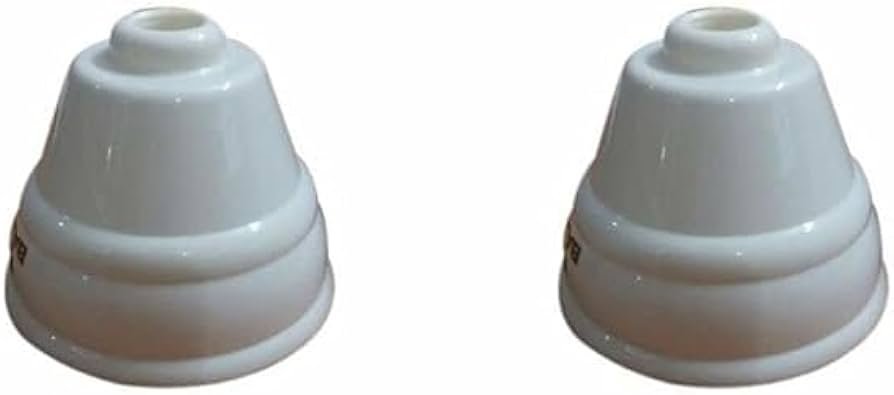
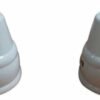
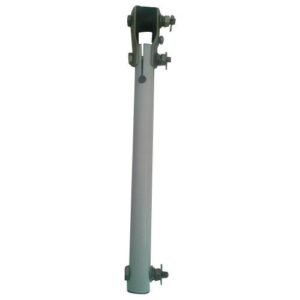
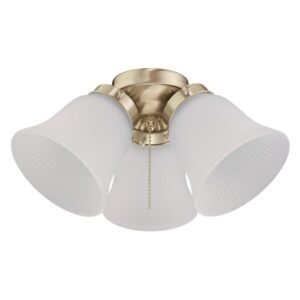
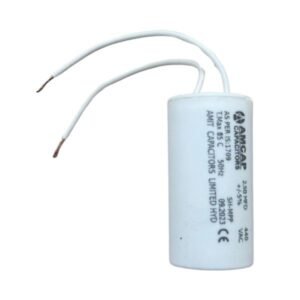
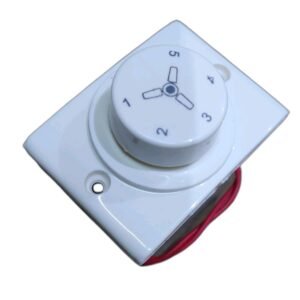
Reviews
There are no reviews yet.